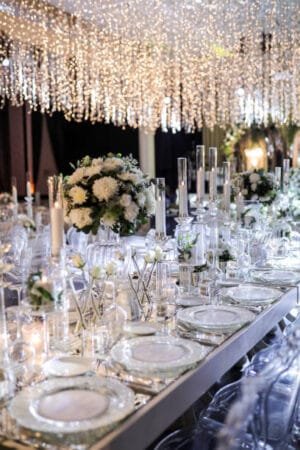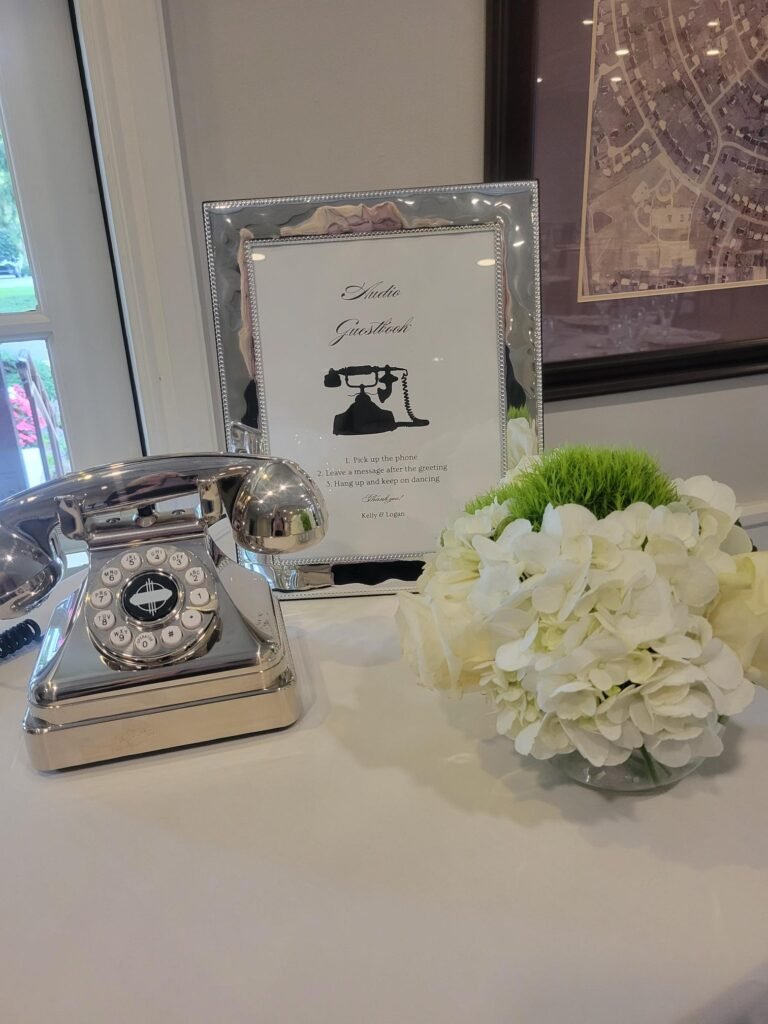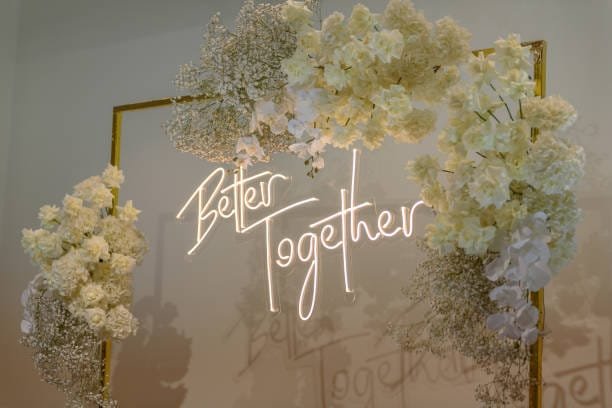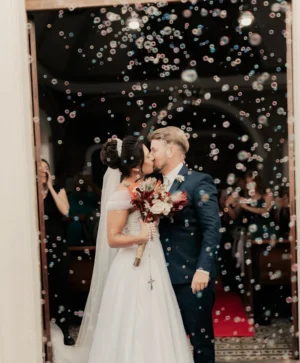Wedding Traditions Couples Are Skipping in 2026
Weddings have always been steeped in tradition, but in 2026, couples are rewriting the rules. Instead of following customs simply because that is how it has always been done, more couples are creating celebrations that feel authentic, personal, and deeply meaningful.
From the ceremony to the reception, outdated wedding trends are giving way to modern alternatives that better reflect today’s values of inclusivity, individuality, and connection. The best part is that guests love these updates because they feel genuine and engaging rather than forced.
Now, let’s explore the wedding traditions couples are leaving behind and the meaningful new ideas that are taking their place.
Perfectly Matched Bridesmaid Dresses

For years, the standard look was a row of bridesmaids in identical dresses, featuring the same color, cut, and fabric. While uniformity looked neat in photos, it did not always make everyone feel confident or comfortable. After all, one dress style rarely flatters every body type.
What is in now is a mix-and-match approach. Couples are allowing bridesmaids to choose cuts and silhouettes that suit their personalities and body shapes, often within a coordinated color palette. This approach not only looks stylish and modern, but also ensures each bridesmaid feels comfortable and confident. As this trend continues to develop, I think the “rules” surrounding bridesmaids’ dresses will continue to relax, and we will see dresses that are even less similar in color and style.

Pro tip: Select a color family, such as dusty blues, warm neutrals, or jewel tones, and let your bridal party pick the style that works best for them. The result is a coordinated, elevated look that is far from cookie-cutter.
Goodbye to the Dollar Dance

The dollar dance, sometimes called the money dance, has been a long-standing wedding tradition in certain regions. Guests line up to pay a small bill in exchange for a quick dance with the bride or groom, often to help the newlyweds start their life together.
In 2026, however, many couples are choosing to skip this ritual. It can feel awkward for guests, and it may slow down the reception, drawing people away from the dance floor.
What is in now are interactive, guest-friendly moments that still foster connection without awkwardness. Some popular alternatives include photo booths with props, a champagne tower pour where everyone raises a glass together, or group dance moments that involve all the guests. These options maintain celebration and community while keeping the energy elevated.
The Fade-Out of the Garter Toss

For decades, the garter toss was a highlight of many weddings. The groom removed the bride’s garter and tossed it to the single men in attendance. However, this tradition has become one of the most skipped rituals in recent years. I have only seen the garter toss at a wedding a few times in the last 10 years.
Many guests find it uncomfortable or outdated, and couples have realized it does not add meaningful value to the celebration.
What is in now are inclusive, lighthearted alternatives that engage everyone without any awkwardness. Couples are opting for a bouquet toss open to all genders, a last dance moment where all guests surround the couple, or even a raffle-style giveaway with a fun prize. These updates create memorable moments while keeping the reception lively and enjoyable.
The Bouquet Toss

The bouquet toss has long been a staple at wedding receptions, with single women lining up to catch the flowers in hopes of being the next to marry. While playful in theory, in practice, it can feel outdated, awkward, or even exclusionary for many guests. In fact, more and more couples are skipping it altogether in 2026.
What is in now are heartfelt alternatives that honor loved ones and create genuine, meaningful moments. One increasingly popular idea is for the bride to present her bouquet to her mother, grandmother, or another influential figure in her life. Often, this is paired with a few words of gratitude for their love, guidance, and support. It transforms a fleeting tradition into a touching, emotional highlight that resonates with all the guests.
Other couples are choosing to gift their bouquet to someone celebrating a milestone, such as an anniversary or birthday, or even donating it afterward to a local hospital or nursing home. These meaningful updates ensure that the gesture carries weight and leaves a lasting impression.
Over-the-Top Décor for Décor’s Sake

In previous years, couples often felt pressure to create extravagant décor, such as towering centerpieces, elaborate floral walls, or setups that looked like a magazine shoot rather than a personal celebration. While visually stunning, this approach often resulted in a hefty bill and décor that lacked sentimental meaning.
For 2026, couples are rethinking this mindset. Décor does not need to be excessive to be beautiful. Guests do not always remember the number of chandeliers or floral arrangements, but they do remember the personal touches and meaningful details. Read this blog on DIY wedding decor.
What is in now is intentional décor that reflects the couple’s values and personalities. Examples include incorporating family heirlooms into centerpieces, using sustainable or locally sourced flowers, or choosing decor that doubles as keepsakes or favors. These thoughtful touches save money, reduce waste, and make the celebration warm, authentic, and memorable.
The Traditional Guest Book
The classic wedding guest book, where guests sign their names and leave brief messages, is often overlooked or quickly forgotten. While it may seem sweet in theory, many couples rarely revisit it, and the messages tend to be short and generic.
In 2026, couples are opting for creative and interactive alternatives that capture genuine memories. Guests enjoy these options because they are engaging and personal.
What is in now are guest books that combine fun and sentiment, such as audio guest books where loved ones leave heartfelt messages, photo guest books with instant photos and notes, or prompt-based keepsakes asking for favorite memories or marriage advice. These modern guest books become cherished keepsakes that couples revisit for years.

The Gigantic Wedding Cake

Towering multi-tier cakes used to be the ultimate wedding statement. But as impressive as they looked, they often came with a hefty price tag and plenty of leftovers. Many couples now see them as more excessive than celebratory.
What is in now is downsizing to a small, beautifully decorated cake for the cutting moment and supplementing with a sheet cake, dessert bar, cupcakes, donuts, or other sweet stations. This approach still offers that iconic cake-cutting photo but gives guests variety and keeps costs manageable. Read this blog on selecting the food and beverages for your wedding.
Overly Staged First Dances

The first dance is a beloved tradition, but not every couple enjoys the pressure of a choreographed performance. Elaborate routines can feel more like a performance than a heartfelt moment, leaving some couples more nervous than excited.
What is in now is a return to intimacy. Many couples are choosing simple, genuine dances that reflect their personality. Some couples invite guests to join the dance halfway through to transform it into a shared moment instead of a spotlight performance. The focus shifts from impressing the crowd to enjoying the moment together.
Assigned Sides at the Ceremony

Traditionally, wedding guests were asked to sit on either the bride’s side or the groom’s side. While once standard, this practice feels outdated in today’s world of blended families and inclusive celebrations. Read this blog on wedding welcome signs you will love.
What is in now is open seating. Signs like “Choose a seat, not a side” or ushers encouraging guests to sit anywhere reflect the spirit of unity. It creates a more welcoming environment and makes it easier for guests to find seats without stress.
Big Bridal Exits with Rice, Confetti, or Balloons

Grand exits with rice tossing, confetti showers, or balloon releases were once popular ways to end a wedding. But in 2026, couples are reconsidering these traditions due to mess, cleanup, and environmental concerns.
What is in now are eco-friendly and creative alternatives. Options like flower petals, ribbon wands, bubbles, or glow sticks offer just as much fun without harming the environment or creating extra work for venues. Some couples even skip the exit entirely in favor of a private last dance, which allows them to soak in the moment before saying goodbye to their guests.

Why Couples Are Choosing Meaning Over Tradition
Why are so many long-standing wedding traditions disappearing? The simple answer is that today’s couples want celebrations that are authentic, intentional, and memorable.
Modern weddings focus on storytelling rather than checking off boxes. Couples are asking themselves, “Does this tradition reflect who we are? Does it add meaning to our day?” If the answer is no, they feel free to skip it.
Several key trends are driving this shift. Personalization matters more than perfection. Guest experience is now a top priority. Sustainability and simplicity are trending as couples aim to reduce waste. Social media also influences wedding planning, as couples aim for memorable, shareable moments rather than staged, outdated rituals.
Ultimately, abandoning stale traditions is not about rejecting the past. It is about creating weddings that are joyful, meaningful, and true to the couple’s story.
Read this blog on modern wedding etiquette.
Other Traditions on Their Way Out
Beyond the big shifts, many smaller wedding customs are also fading as couples focus on authenticity and personal meaning. While they may not dominate the day, these little traditions reflect the same trend of moving away from “we’ve always done it this way.”
- Getting married on the half hour: Once thought to be lucky, this superstition is fading fast. Couples now choose ceremony times that work best for their timeline and lighting.
- Not seeing each other before the wedding: Many couples embrace a first look or spend the morning together, prioritizing calm and connection over tradition.
- Something borrowed, something blue: While still sweet, more couples are choosing personal heirlooms or meaningful tokens instead of following the old rhyme.
- Cake smashing in each other’s faces: What used to be a playful photo-op now feels messy or awkward. Most couples opt for a clean, classy cake-cutting instead.
- Formal receiving lines: Instead of greeting each guest one by one, couples mingle during cocktail hour or dinner for a more relaxed vibe.
- The bride’s family pays for the wedding: With shifting norms and finances, it’s more common for both families—or the couple themselves—to share expenses.
- Matching wedding bands: Couples are increasingly picking rings that reflect their individual styles rather than identical sets.
- Wedding registries filled only with household items: Since many couples already live together, they ask for experiences, honeymoon funds or even donations to causes they care about.
- Long speeches during dinner: More couples are opting for casual, relaxed backyard parties, pizza nights, or food trucks.
These changes may seem small, but together they tell a bigger story: modern couples are making choices that feel authentic, practical, and aligned with their values.
Conclusion
Weddings may be rooted in tradition, but in 2026, couples are proving that the best celebrations are the ones that feel personal, intentional, and authentic. By letting go of rituals that feel forced, whether it is the garter toss, bouquet toss, or oversized cakes, couples are designing weddings that leave lasting impressions for all the right reasons.
At the end of the day, your wedding should reflect your love story. Keep the traditions that bring joy, skip the ones that do not, and remember that there is no right way to say “I do.”
Now it is your turn: Which wedding traditions are you planning to skip, and what meaningful alternatives are you excited to try? Let me know in the comments below.



